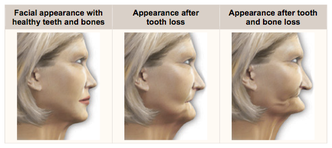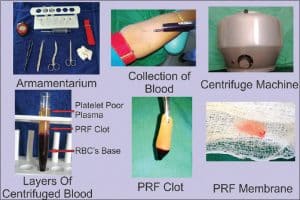Is it necessary to get a bone graft for a dental implant?
Are bone grafts needed to get implants? It is necessary to get a bone graft approximately 60% of the time when getting dental implants. It may or may not be necessary to get a bone graft for a dental implant. Whether or not a bone graft is necessary depends on two things:
- If there is jaw bone damage that needs to be repaired prior to getting a dental implant
- If there is not enough volume of bone available to get an implant, the implant cannot be placed prior to growing new bone.
Different Types of Bone Grafts:
There are many situations where bone grafts can be necessary. Below we review the common sites where bone grafting is often necessary.
Extraction site or “Socket Preservation”
If a tooth is extracted there will be a tooth extraction site that needs to heal and fill-in with bone prior to or at the same time as getting an implant. The decision to do or not to do a bone graft comes down to whether or not a graft will become necessary to get adequate bone to heal around an implant. Let’s take the example of a large molar tooth extraction site where the tooth extraction site is 8-12mm wide and perhaps 13mm deep in bone. With a large bony hole such as this extraction site, it will be nearly impossible to place a molar dental implant because the average size molar implant is 5-7mm wide by 10-12mm deep. The implant will literally be swimming in the extraction site and will not be placed intro any bone. In this case, the dental implantologist will need to place a bone graft into the extraction site and wait 3-4 months for the patient to grow bone and fill the bony defect with new healthy jaw bone.
Bone Graft to repair bone loss due to a tooth abscess
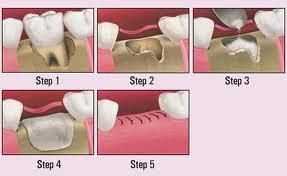
Tooth Abscess destroys bone that needs to be repaired and heal. Bone abscesses can be a very difficult to repair with a bone graft. root canal failures can be the biggest cause of bone abscesses. It is very difficult to predict how long and how many procedures may be necessary to repair bone caused by a dental abscess. Generally speaking, how long it can take to get a implant after a tooth abscess is determined by the size a shape of the bone damage. Other factors are the patient’s health and the health and quality of the remaining bone.
In some cases it can be difficult if not impossible to get an implant after a tooth abscess caused by a root canal. In the event of an abscess, it usually takes 6 months to get an implant. One bone graft procedure will be necessary to do a bone graft, 3-4 months to heal and another 2-3 months to place and have an implant heal.
Delayed bone graft weeks after tooth extraction
In some cases of tooth abscess, the root canal tooth or abscessed tooth may need to be extracted in one appointment and the bone graft may need to be done weeks later after a terrible acute draining infection has subsided. In cases of severe infection and bone loss, there also may need to be multiple bone graft procedures performed to gain enough bone for dental implant surgery. As you can understand, bone factors where there has been dental abscess and bone loss can be very unpredictable, time consuming and without guarantee.
Block bone graft to rebuild bone width and/or height
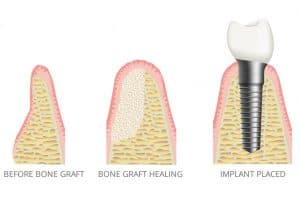
Bone loss related to tooth loss years ago. The problem here is there may not be enough bone volume to perform dental implant surgery. In these cases, a volume of bone will need to be grown prior to placing a dental implant. This is called a block bone graft or quadrant graft. In most cases, bone grafting can be performed with a 3-4 month healing period prior to getting a dental implant. Of course once there is adequate bone, implants can be done which require a 3-4 month healing period. Sometimes dental implants can be done at the same time as placement of the dental implants, cutting the time to as little as 3-4 months. The healing time depends on how much bone needs to be grown, the health of the patient and the quality of the patients bone where the bone graft is being performed.
Bone regeneration after loss from periodontal disease
Bone loss from periodontal disease / gum disease. Gum disease is a disease of the connection between the teeth and the jaw bone. In many cases no matter what is done in the way of teeth treatments, the teeth may be lost in the event of periodontal disease. In cases of moderate to severe gum disease, it is best to remove the teeth prior to losing all the bone around the teeth. Once to the bone is lost it is a lot more difficult to replace it. The key is to remove the teeth prior to losing all the bone. Once the teeth are removed and bone grafting is done, the gum disease process and associated bone loss will stop (because the cause of the bone loss-the teeth- is gone).
Bone grafts and Implants with Periodontal Disease
The key with gum disease is to get the teeth out as quickly as possible and implants placed, so you don’t end up spending a lot of time and money and dental procedures doing bone grafting. Theses cases can be very difficult to decide to act on because removing your teeth is a difficult decision to make but people who lose all their teeth to gum disease usually wish they had acted more quickly. Especially when they are sitting through several bone graft procedures and waiting long periods of time to get dental implants. Additionally once bone is lost, it is difficult to replace and you never get all the bone back.
Bone grafting for implants can be challenging
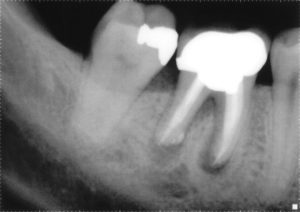
The key is to manage tooth loss with immediate or near immediate replacement of a natural tooth with an implant. If a tooth is replaced prior to any bone being lost, most of the time there will not be any bone loss and that is the key-to never lose bone by keeping teeth be they natural or implants in the mouth. Where we get into to trouble is teeth over-staying their healthy stay in the mouth or teeth being lost and not replaced in a timely fashion.
Chronically Infected sites can be difficult to bone graft
Extra care and attention should given to teeth with a great amount of infection. Such infections exist in root canals and cases of gum or periodontal disease. But are bone grafts necessary to get a dental implant? It depends on if there is enough bone width and height to place a dental implant successfully. Sometimes it is not necessary to get a bone graft for a dental implant, but doing so will improve the result of the implant result.
Bone Grafting with Platelet Rich Fibrin
Bone grafting techniques have come a long way. Platelet Rich Fibrin or PRF with bone grafting and more advanced and safer bone graft products have made bone grafting a lot more successful and predictable.
Other popular pages:
But are bone grafts necessary to get a dental implant? Best thing is to get the opinion of a couple different implant dentists, but you may not know for sure till the day of implant surgery when there will either be enough good bone or not.

